Creating the ideal habitat for your bearded dragon is one of the most important responsibilities of any reptile owner—especially as your pet grows. While smaller enclosures may be fine for juveniles, adult dragons need significantly more space to move, bask, and explore. That’s where the 120 gallon bearded dragon tank comes in.
A 120 gallon bearded dragon tank offers the perfect balance of space, comfort, and environmental control, making it a top choice for experienced keepers and new owners alike. In this guide, we’ll walk you through everything you need to know to set up the perfect large-scale enclosure—from choosing the right lighting and substrate to optimizing layout and décor for enrichment.
If you’re considering an upgrade or starting fresh with a spacious setup, this post will help you build a healthy, enriching home your dragon will thrive in.
Why a Large Enclosure Is Ideal for Adult Bearded Dragons
As bearded dragons grow into adulthood, their need for space increases dramatically. A small tank might suffice for juveniles, but adult dragons thrive in a more expansive environment that allows for movement, exploration, and proper thermal regulation. In this section, we’ll explore how growth, behavior, and enclosure size all play a role in creating the ideal habitat.
Growth Needs and Natural Behavior of Bearded Dragons
Bearded dragons (Pogona vitticeps) grow rapidly in their first year. Hatchlings start out small, but adult dragons can reach lengths of 18 to 24 inches—or even more in larger morphs. As they mature, their need for space increases, not just for physical comfort but also for behavioral stimulation.
In the wild, these reptiles roam open spaces, bask under the sun, and explore complex terrain. They are naturally active during the day, often moving between basking and cooler zones to regulate their body temperature. Replicating this behavior in captivity requires a large, well-structured enclosure.
A cramped tank can lead to stress, limited movement, and even long-term health issues. Adult dragons benefit from room to walk, climb, and engage in natural behaviors like digging or head bobbing. A 120 gallon bearded dragon tank supports these needs with enough space for zones, hides, and climbing elements.
Providing the right amount of space is more than just a luxury—it’s essential for their physical development and overall well-being.
Comparing Common Tank Sizes to a 120 Gallon Bearded Dragon Tank
Choosing the best tank size for a bearded dragon depends largely on its age and activity level. Many beginner setups start with a 40-gallon breeder tank. While this might be fine for juveniles, it becomes too cramped once the dragon reaches adulthood.
Some owners upgrade to 75 or 90-gallon tanks. These offer more space but still fall short of meeting the full behavioral needs of adult dragons. Limited floor space restricts movement and makes it difficult to create a proper temperature gradient.
A 120-gallon bearded dragon tank, typically sized at 4x2x2 feet, provides ample room for basking, hiding, climbing, and feeding zones. It’s widely regarded as the best tank size for a bearded dragon that has reached full maturity.
With more horizontal space, you can separate warm and cool areas effectively. This setup also allows for a richer, more enriching habitat layout. For long-term health and happiness, the 120-gallon option is not just better—it’s the gold standard.
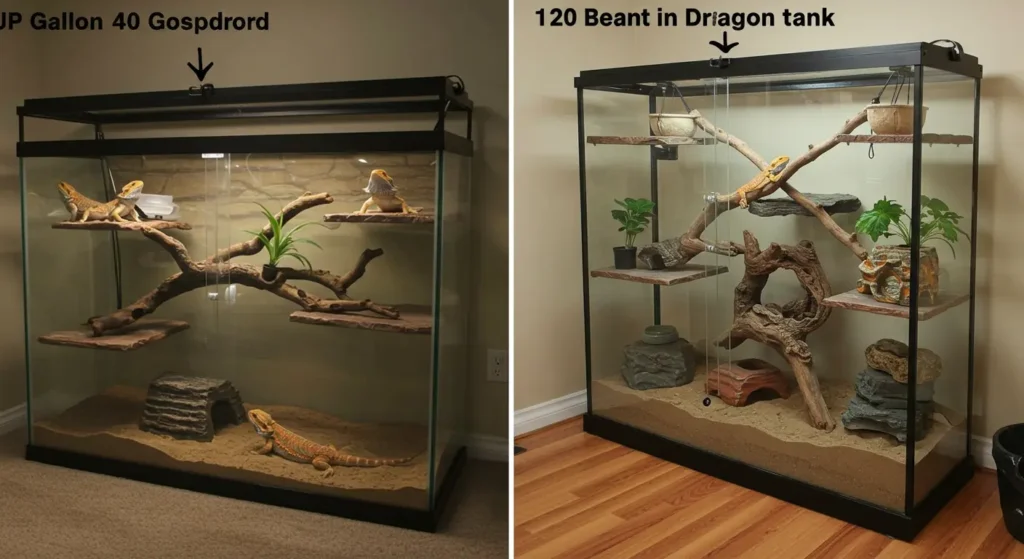
Benefits of Upgrading to a 4x2x2 Enclosure
Upgrading to a 4x2x2 tank offers major benefits for both you and your bearded dragon. This enclosure size—equal to 120 gallons—gives your pet the space it needs to move freely, explore, and thrive. Unlike smaller tanks, a 4x2x2 enclosure allows for proper zoning between warm and cool areas.
Your dragon can walk, turn comfortably, and stretch out fully without feeling cramped. This reduces stress and supports healthy muscle development. The added floor space also allows for a variety of enrichment features, like climbing branches, basking rocks, and hiding spots.
A 4x2x2 tank makes it easier to maintain ideal temperatures, as heat and UVB lighting can be set up across a wider range. The design also mimics the open terrain that bearded dragons enjoy in the wild.
In short, this upgrade supports better physical health, encourages natural behavior, and makes habitat maintenance more manageable for you as an owner.
If your bearded dragon is part of a larger morph—like the impressive German Giant—then a 120 gallon tank isn’t just ideal, it’s necessary. Learn how to identify a true German Giant bearded dragon here.
Setting Up the Interior of Your Bearded Dragon’s Habitat
Designing the interior layout of your bearded dragon’s habitat is about more than just looks—it directly affects their comfort, health, and behavior. A well-planned vivarium should include functional features that mimic their natural environment while supporting their daily routines. In this section, we’ll break down the key elements that make up a safe and enriching interior setup.
Choosing Safe and Functional Substrate
The type of substrate you use in your bearded dragon’s enclosure plays a big role in their overall health and safety. Loose substrates like sand may seem natural, but they can lead to impaction—a serious and sometimes fatal condition caused by accidental ingestion. For this reason, many reptile keepers now look for safer alternatives.
One of the most popular options is reptile carpet. It’s soft, easy to clean, and reusable. It also prevents loose particles from building up in your dragon’s digestive tract. Another great choice is ceramic tile. It offers a clean, solid surface that retains heat well and allows for natural claw wear during movement.
Other alternatives include newspaper or non-adhesive shelf liner. These are affordable and simple to replace during cleaning. However, they may not look as natural as tile or carpet.
The key is to choose a substrate that’s non-toxic, easy to maintain, and doesn’t pose a health risk. A safe, functional base makes your 120 gallon bearded dragon tank both practical and comfortable.
Choosing the Right Décor for Your 120 Gallon Bearded Dragon Tank
Adding the right furniture and décor to your bearded dragon’s enclosure is essential for creating a natural and enriching environment. Climbing décor like sturdy branches or cork bark encourages movement and helps replicate their wild behavior. These elements also give your dragon a better view of their surroundings, which can reduce stress.
A basking rock placed directly under a heat lamp helps your dragon absorb warmth efficiently. Make sure it has a flat surface and won’t shift or tip over. Hides are equally important. They provide a secure place for your pet to rest or cool down when needed.
All décor should be made from reptile-safe materials. Avoid sharp edges, painted items, or anything treated with chemicals. You can use natural wood, slate tiles, or commercially made reptile furniture.
By combining climbing features, basking zones, and hiding spots, you create a habitat that meets both the physical and psychological needs of your bearded dragon.
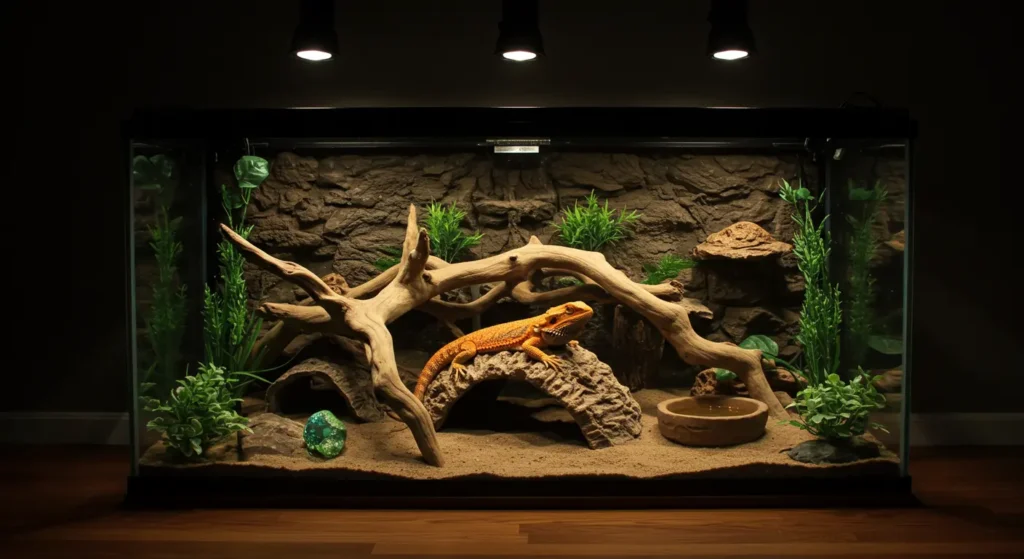
Using Reptile-Safe Plants for Enrichment
Incorporating reptile-safe plants into your bearded dragon’s enclosure is a simple way to make the environment feel more natural. Whether real or artificial, plants offer visual interest and encourage exploration. A well-placed plant can even help divide areas of the tank, such as basking and hiding zones.
Many owners choose fake plants for reptiles because they are easy to clean, long-lasting, and pose no risk of ingestion. Look for options made from non-toxic materials that are securely anchored to prevent tipping. These work well in a naturalistic setup, offering greenery without added care.
Live plants are also an option, but they must be dragon-safe and able to thrive in a dry, high-heat environment. Good choices include aloe vera or succulents—though these should be monitored for nibbling.
Plants create visual variety and reduce stress by mimicking a more lifelike habitat. When chosen carefully, they add enrichment without increasing maintenance.
Lighting and Heating Essentials for Large Enclosures
Proper lighting and heating are critical for your bearded dragon’s health, especially in a large enclosure like a 120-gallon setup. Without the right UVB exposure and temperature gradient, even a well-decorated tank can cause stress or illness. In this section, we’ll break down the essentials you need to create a safe and balanced environment.
Best UVB Lighting Placement in a 120 Gallon Bearded Dragon Tank
UVB lighting is essential for bearded dragons. It helps them synthesize vitamin D3 and absorb calcium properly. Without it, they can develop serious health issues like metabolic bone disease. In a large tank, UVB coverage must be consistent and strong.
The Zoo Med ReptiSun is a trusted option, especially the T5 high-output version. Compared to T8 bulbs, T5s are stronger and more efficient in larger enclosures. They can be mounted inside the tank or on top of a mesh lid, but placement matters.
Position the bulb so your dragon can bask within 10 to 12 inches of the light. Use a reflector hood to direct the rays downward and avoid light loss. Make sure the UVB is unobstructed—no glass or plastic in the way.
Replace the bulb every 6 to 12 months, even if it still lights up. The UVB output weakens over time. Proper UVB strength and placement are key to supporting your bearded dragon’s bone health and overall vitality.
Establishing a Proper Temperature Gradient
A temperature gradient allows your bearded dragon to self-regulate body heat—just like in the wild. One end of the tank should offer a hot basking spot, while the other stays cooler.
The basking area should reach around 95–105°F for adults. Juveniles may need it slightly hotter. The cool zone, on the opposite end, should stay around 75–85°F. Use a reliable thermometer on each side to monitor both zones accurately.
A dome heat lamp works well for basking, especially when paired with a proper basking platform like a rock. Avoid heating the entire enclosure evenly—dragons need options to move between warm and cool spots.
The larger the tank, the more important it becomes to manage heat zones correctly. A proper gradient keeps your dragon active, improves digestion, and prevents overheating.
Do You Need Nighttime Heating in a 4x2x2 Bearded Dragon Terrarium?
Most homes don’t require nighttime heating for bearded dragons. They can tolerate cooler temperatures at night—down to about 65°F. However, if your home drops below this, adding a heat source may be necessary.
The safest option is a Ceramic Heat Emitter (CHE). It produces heat without light, so it won’t disrupt your dragon’s sleep cycle. Avoid using colored bulbs, as these can still affect natural rhythms.
Install the CHE with a thermostat to prevent overheating. Always mount it securely, using a ceramic fixture designed to handle the heat.
Only use nighttime heating if absolutely needed. Overheating can cause more problems than a small temperature drop. Focus on safety, comfort, and balance.
Maintenance and Monitoring in a 120-Gallon Vivarium
Keeping a 120-gallon vivarium clean and well-regulated is essential for your bearded dragon’s long-term health. Larger enclosures offer more space, but they also require consistent maintenance and careful monitoring. In this section, we’ll cover practical routines to help you manage hygiene, temperature, and daily care with ease.
Cleaning Tips for a Large Bearded Dragon Setup
A clean habitat is key to preventing illness and keeping your dragon happy. In a 120-gallon setup, cleaning can feel like a bigger task, but breaking it into daily, weekly, and monthly steps makes it manageable.
Start with spot cleaning every day. Remove uneaten food, shed skin, and waste from the enclosure and substrate. This prevents bacteria buildup and keeps odors away. For substrate cleaning, replace or disinfect surfaces like reptile carpet or tile as needed—at least once a week.
A deep clean routine should happen every 4–6 weeks. Remove all décor, disinfect surfaces with a reptile-safe cleaner, and let everything dry before placing it back. Clean hides, branches, and rocks thoroughly as well.
Consistency is the secret. Regular cleaning not only protects your bearded dragon’s health—it also helps you catch issues early, like mold, pests, or abnormal waste.
Monitoring Humidity and Temperature
Large enclosures require close monitoring to maintain ideal conditions. Your bearded dragon needs a consistent heat gradient and low humidity to stay healthy.
Use a digital thermometer on both the basking and cool sides of the tank. This ensures temperatures stay in the proper range—around 100°F in the basking zone and 75–85°F on the cooler side. Don’t rely on stick-on dials, which are often inaccurate.
A digital hygrometer helps you track humidity, which should stay between 30% and 40%. Levels that are too high can cause respiratory issues. Keep the sensor near your dragon’s typical resting area, not near a water dish or basking light.
Check these readings daily. Stable humidity and proper temperatures support digestion, activity, and shedding. In a large vivarium, even small changes can have a big impact.
Feeding and Hydration Stations
Setting up the right feeding and hydration stations makes daily care easier and reduces mess in your bearded dragon’s enclosure. Use a shallow food bowl placed in a low-traffic corner to serve greens, veggies, and insects.
Keep the bowl off the substrate to avoid contamination. Elevated platforms or slate tiles work well as a clean, stable surface. Place a water dish on the cool side of the enclosure. This prevents excess evaporation and helps control humidity levels.
Check and refill water daily. Clean the bowl often to prevent bacteria buildup. Bearded dragons may not drink often, but fresh water should always be available.
Avoid overfilling dishes, and remove uneaten food promptly. This improves hygiene and keeps pests like gnats away. A tidy feeding zone makes for a healthier, happier dragon.
Where to Buy and How to Afford a 120-Gallon Enclosure
Investing in a 120-gallon enclosure can feel overwhelming at first, but finding the right tank at the right price is easier than you might think. With so many brands and options available—both new and used—you have flexibility to match your budget. In this section, we’ll explore where to buy, what to look for, and how to make a large setup more affordable.
Reputable Brands and Retailers
When shopping for a large tank, it’s best to buy from trusted sources. Exo Terra offers high-quality enclosures built for reptiles, including solid glass tanks with front-opening doors. PetSmart and Chewy carry a range of 120-gallon tanks, often with online-only deals or seasonal discounts. Reptile Supply Co. is another reliable retailer with a strong selection of reptile enclosures and accessories. Choosing a reputable brand ensures safety, durability, and proper ventilation.
DIY vs. Pre-Made: Cost Comparison and Durability
Building your own tank can save money, especially if you’re good with tools. Custom enclosures let you control size and materials, often for less than retail price. However, pre-made tanks are quicker to set up and usually come with warranties. If you want long-term durability and ease of use, pre-made may be the better option. For those on a tighter budget, a DIY build can still be a great solution—just be sure it’s escape-proof and safe.
Tips for Finding Deals or Secondhand Setups
Used tanks can save you a lot of money, especially when buying locally. Check Craigslist, Facebook Marketplace, and local pet groups for listings. Look for tanks with minimal wear, no cracks, and working hardware. Ask about the tank’s history—what was kept in it and why it’s being sold. Always inspect in person when possible. With patience, you can find a high-quality 120-gallon tank for half the retail price or less.
Conclusion: Give Your Bearded Dragon the Space It Deserves
Upgrading to a 120 gallon bearded dragon tank isn’t just about size—it’s about giving your pet the space, comfort, and environment it needs to thrive. From choosing the right enclosure to setting up proper lighting, heating, and décor, every detail plays a role in your dragon’s health and happiness.
Whether you’re buying new, building your own, or hunting for deals, this investment pays off through better behavior, reduced stress, and a longer, healthier life for your reptile companion. A thoughtfully designed large tank transforms basic care into a rewarding experience—for both you and your dragon.
Now that you know what’s needed to build the perfect setup, it’s time to take action. Create a habitat that truly feels like home.

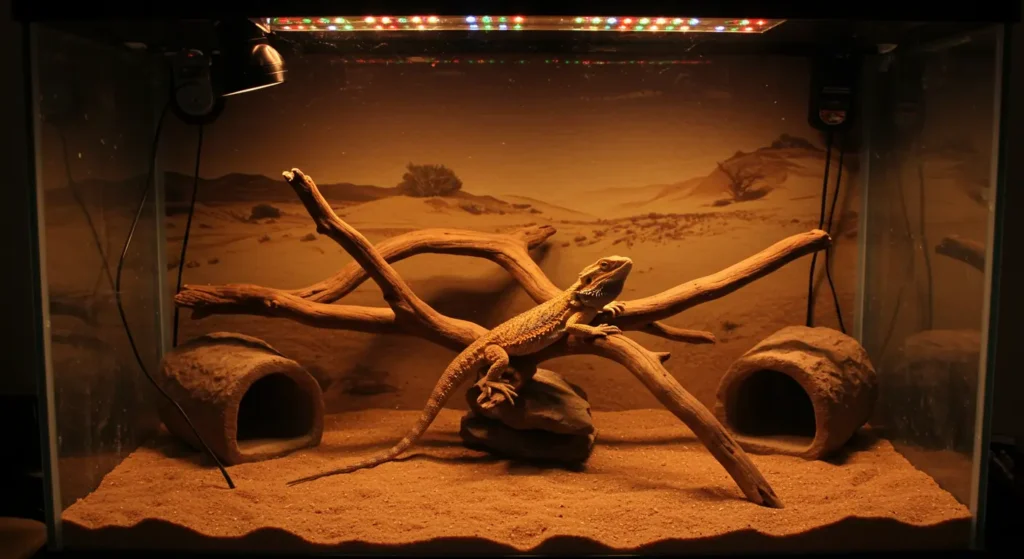
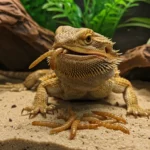
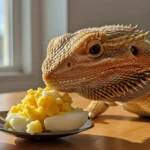
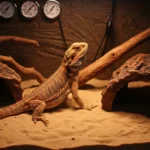
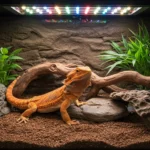
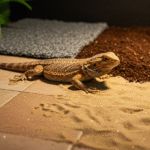
4 thoughts on “How to Create the Perfect 120 Gallon Bearded Dragon Tank”